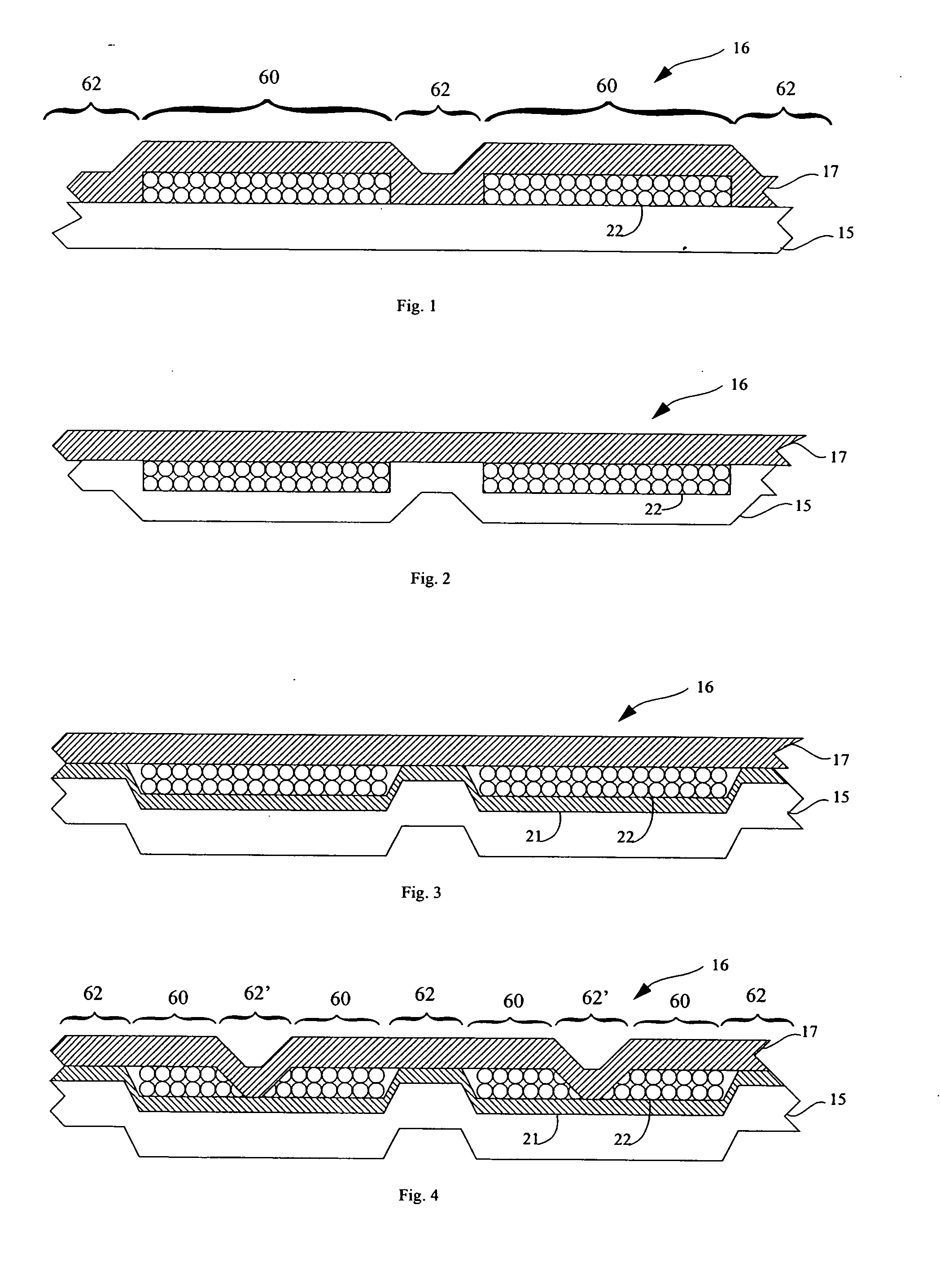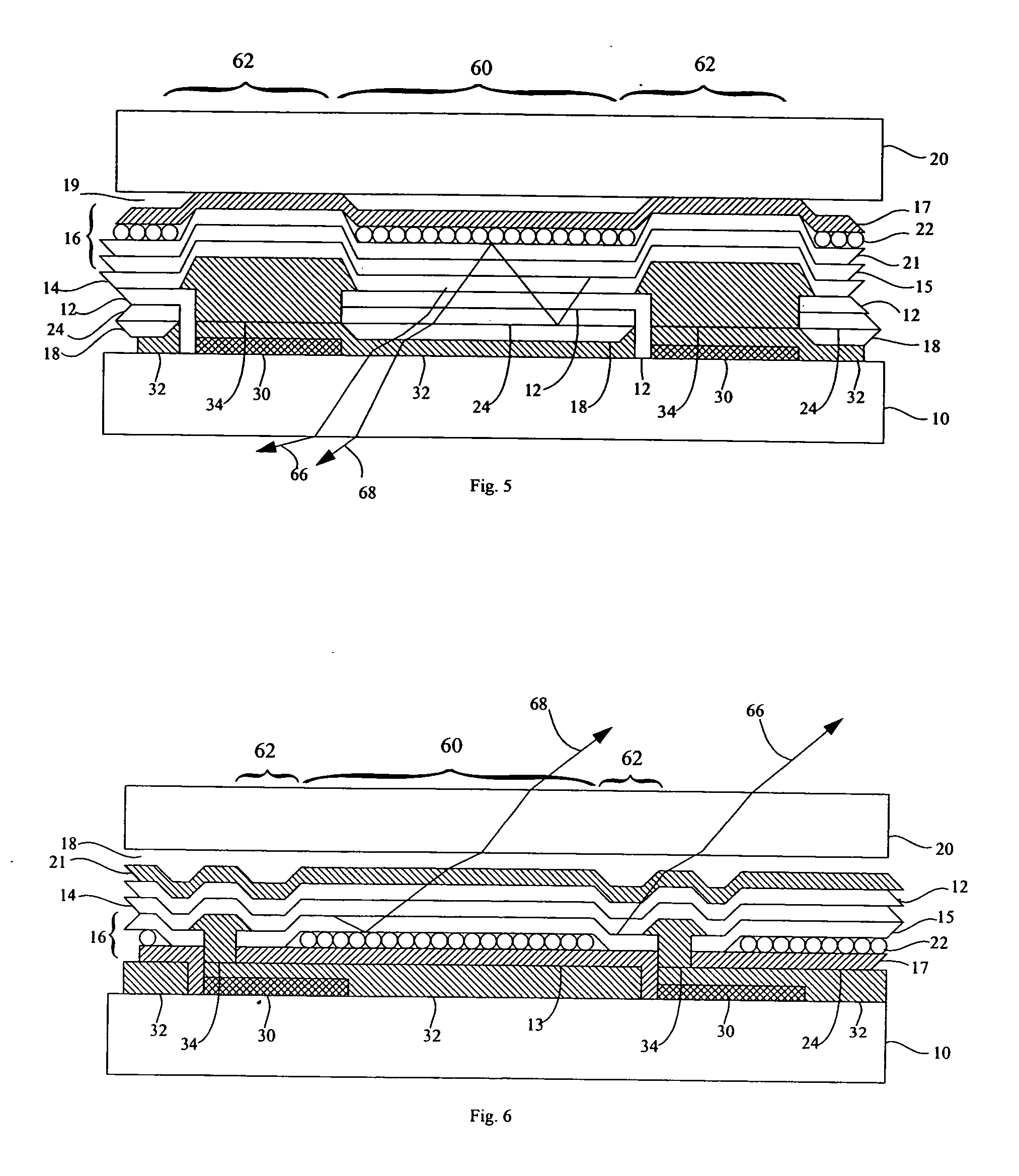Composite electrode for light-emitting device
a technology of light-emitting devices and composite electrodes, which is applied in the direction of semiconductor devices, basic electric elements, electrical apparatus, etc., can solve the problems of limiting the efficiency of oled devices, affecting the power distribution and manufacturability of light-emitting devices, and absorbing a large amount of light output from the light-emitting layer in the oled within the device, so as to achieve greater light-emission efficiency and improve power distribution and manufa
- Summary
- Abstract
- Description
- Claims
- Application Information
AI Technical Summary
Benefits of technology
Problems solved by technology
Method used
Image
Examples
Embodiment Construction
[0026] Referring to FIG. 1, in accordance with one embodiment of the present invention, a multi-layer composite electrode 16 for an OLED device comprises a transparent, conductive layer 15 and a reflective, conductive layer 17 in electrical contact with the transparent, conductive layer 15. A light-scattering layer 22 is formed between the transparent, conductive layer 15 and the reflective, conductive layer 17 over only first portion 60 of the transparent, conductive layer 15. Light-scattering layer 22 is relatively less conductive than the reflective, conductive layer 17 and the reflective, conductive layer 17 is in electrical contact with the transparent, conductive layer 15 over second portion 62 of the transparent, conductive layer 15 where the light-scattering layer 22 is not formed. In various embodiments, the scattering layer 22 may comprise transparent refractive particles, reflective particles, and / or conductive particles.
[0027] In various embodiments of the present inven...
PUM
| Property | Measurement | Unit |
|---|---|---|
| thickness | aaaaa | aaaaa |
| thick | aaaaa | aaaaa |
| thick | aaaaa | aaaaa |
Abstract
Description
Claims
Application Information
 Login to View More
Login to View More - R&D
- Intellectual Property
- Life Sciences
- Materials
- Tech Scout
- Unparalleled Data Quality
- Higher Quality Content
- 60% Fewer Hallucinations
Browse by: Latest US Patents, China's latest patents, Technical Efficacy Thesaurus, Application Domain, Technology Topic, Popular Technical Reports.
© 2025 PatSnap. All rights reserved.Legal|Privacy policy|Modern Slavery Act Transparency Statement|Sitemap|About US| Contact US: help@patsnap.com



